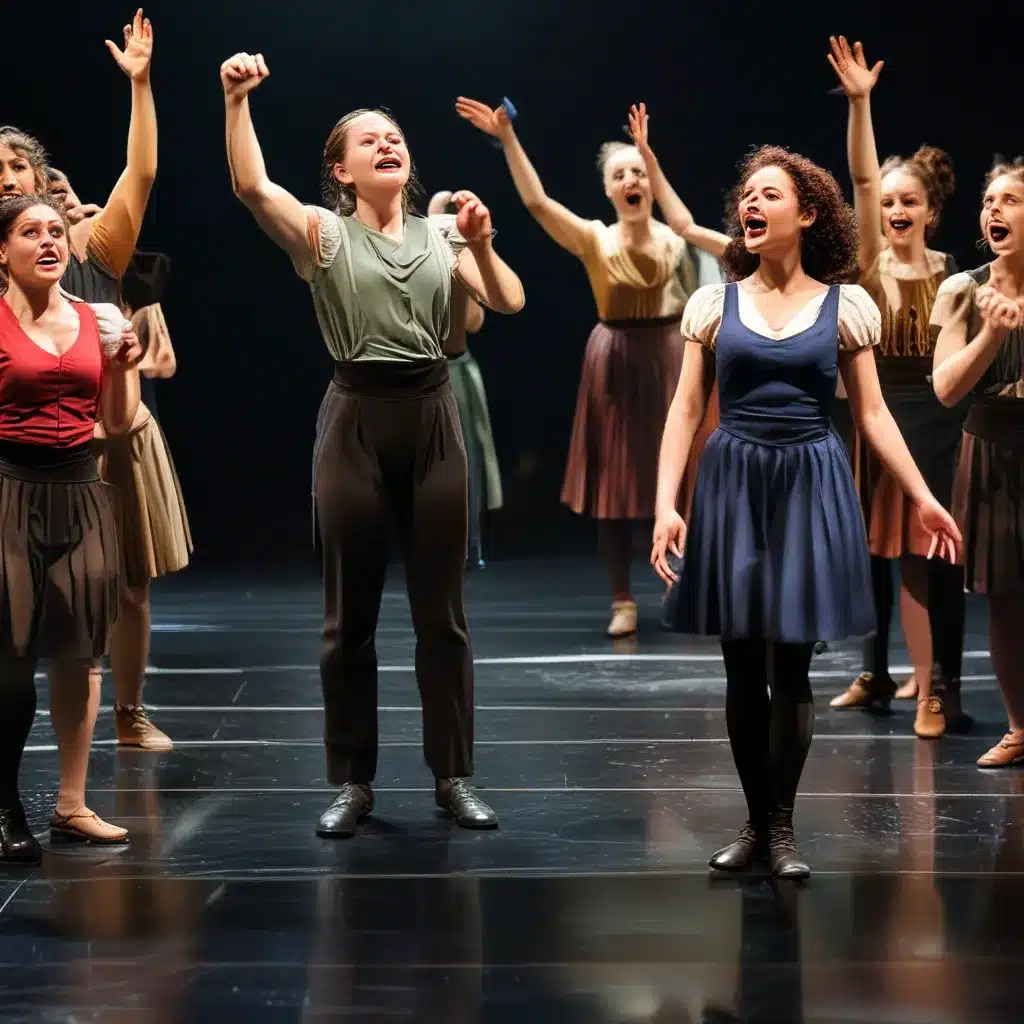
Embracing the Cultural Tapestry of Broadway
As a self-proclaimed “partial Broadway nerd,” I’ve always been captivated by the power of musical theater. From the electrifying energy of a live performance to the timeless melodies that tug at our heartstrings, there’s something truly magical about this art form. But beyond the glitz and glamour, the role of musical theater in shaping our cultural landscape has evolved significantly over the years.
As Colleen Rauch eloquently points out, the evolution of Broadway musicals has mirrored the shifting societal perspectives and the fight for greater representation. Gone are the days when female characters were relegated to one-dimensional roles, existing solely to serve the male protagonists. Today, we see dynamic, multifaceted women taking center stage, their stories resonating with audiences in profound ways.
Take, for instance, the juxtaposition between the classic “Carousel” and the modern masterpiece “Wicked.” While the former reflects the more traditional, patriarchal views of its era, the latter embraces the complexities of womanhood, empowering its female leads to defy gravity and find their own paths. This evolution speaks volumes about the growing recognition of the diverse experiences and perspectives that deserve to be celebrated on the Broadway stage.
Shattering the Homogeneous Mold
But the progress in representing gender on Broadway is only one piece of the puzzle. As Rauch rightly points out, the lack of ethnic and cultural diversity has long been a glaring issue in the theater community. For too many years, the stories told on Broadway have catered to the dominant, European-American narrative, leaving little room for the rich tapestry of experiences that make up our global community.
However, a shift is underway. Musicals like “The Band’s Visit,” which Rauch hails as a triumph of cultural appreciation, are breaking down barriers and introducing audiences to underrepresented cultures. By showcasing the shared humanity that transcends geographical and linguistic boundaries, these productions not only entertain but also educate and inspire.
Fostering Community Connections
But the impact of musical theater extends far beyond the bright lights of Broadway. As evidenced by the Ogden Musical Theatre in Utah, community-based theater groups are playing a vital role in strengthening the bonds within their local communities.
Funded in part by Weber County government and housed at the Peery’s Egyptian Theater, the Ogden Musical Theatre is more than just a stage for talented performers. It’s a hub of cultural enrichment, where audiences can experience the magic of live musical theater while connecting with their neighbors. As producer Kassi Bybee eloquently states, “It is very unusual to have that kind of support from the county,” highlighting the importance of local authorities recognizing the transformative power of the arts.
Empowering the Next Generation
But the Ogden Musical Theatre’s impact extends beyond the stage, as it also hosts a popular summer theater camp for kids called “Kids Act Up.” By providing young performers with the opportunity to hone their skills and share the spotlight, these programs are nurturing the next generation of theater enthusiasts and advocates.
As artistic director Maurie Tarbox explains, “The talent we have within Northern Utah to be able to do performances at this professional level is outstanding.” By paying their performers, the Ogden Musical Theatre is not only showcasing top-notch talent but also demonstrating the respect and value they place on their artists.
Sparking Imagination and Connection
The role of musical theater in shaping our communities extends far beyond the stage. As we’ve seen, it’s a powerful tool for fostering cultural exchange, empowering the next generation, and strengthening the bonds that tie us all together.
Whether it’s the groundbreaking diversity of Broadway or the community-driven efforts of groups like the Ogden Musical Theatre, the evolving role of musical theater is a testament to its enduring ability to inspire, educate, and captivate audiences of all backgrounds.
As I reflect on my own love for this art form, I can’t help but imagine the countless lives that have been touched, the perspectives that have been broadened, and the imaginations that have been ignited by the magic of musical theater. And as I browse the website of the Musical Theater Center, I’m filled with a sense of wonder and excitement for the endless possibilities that lie ahead.
So, let’s continue to embrace the cultural tapestry that musical theater offers, and let it be a guiding light in our journey towards a more inclusive, vibrant, and connected community.

